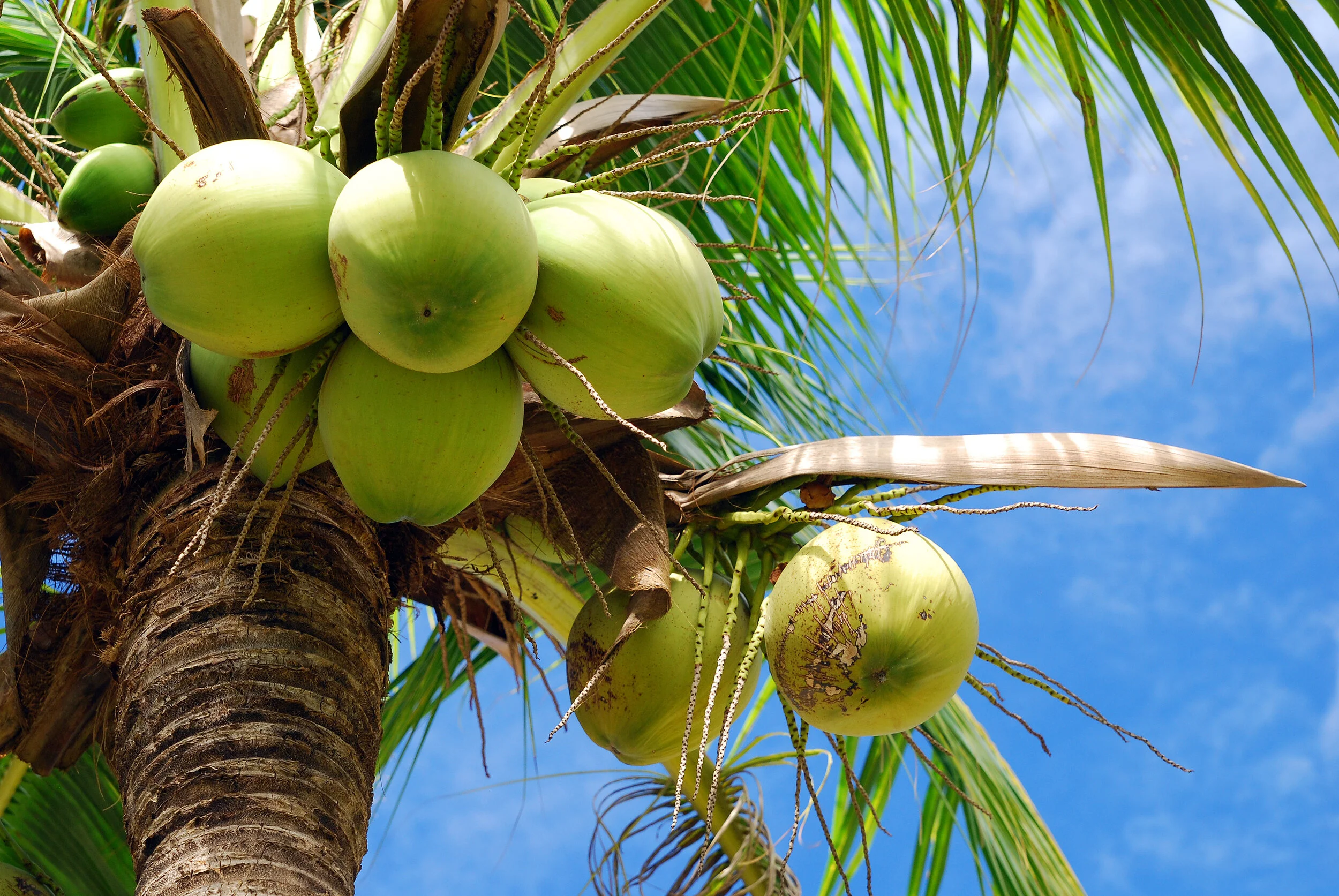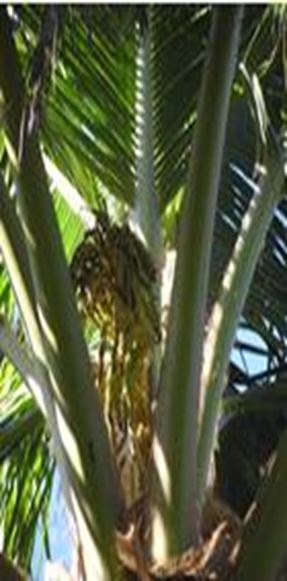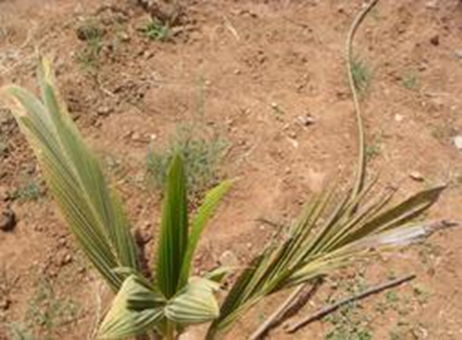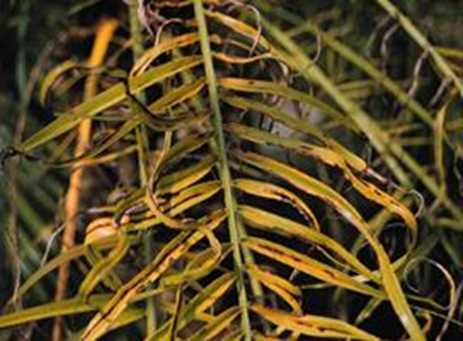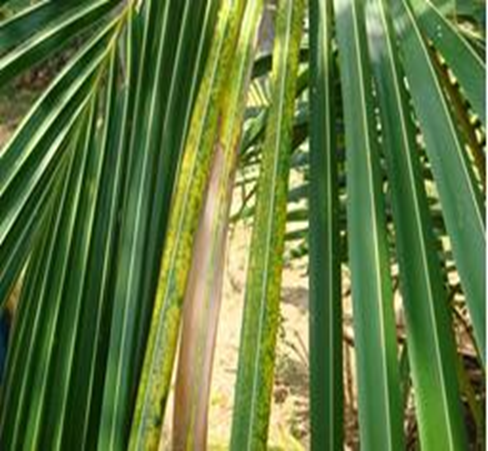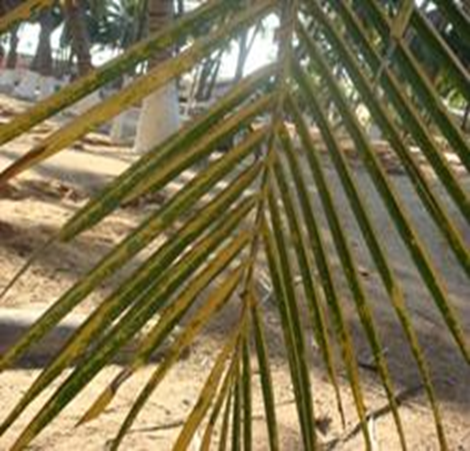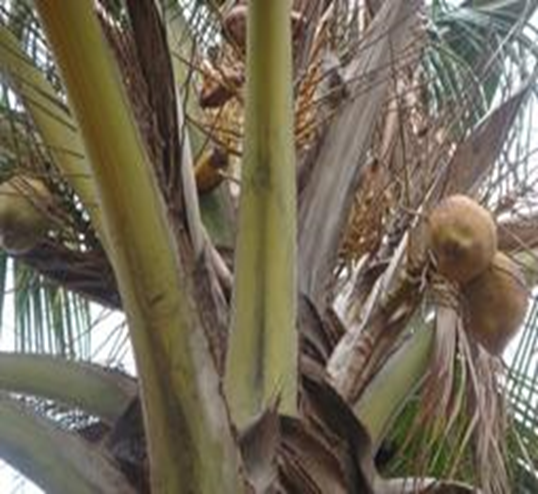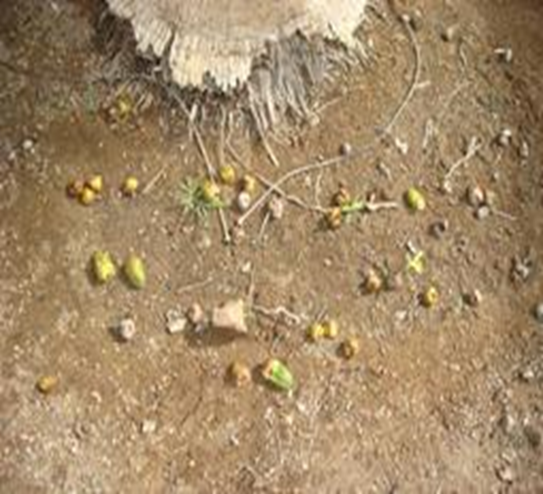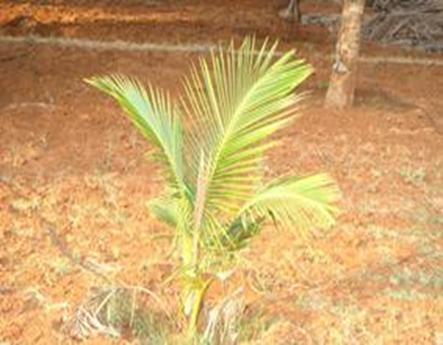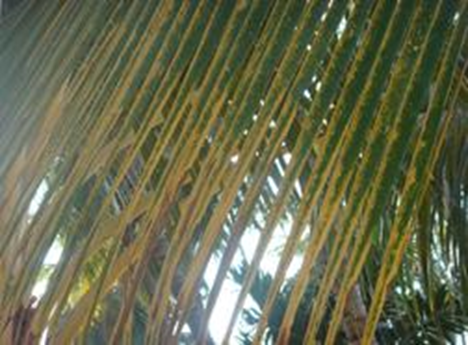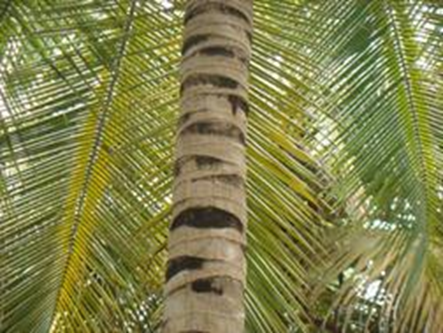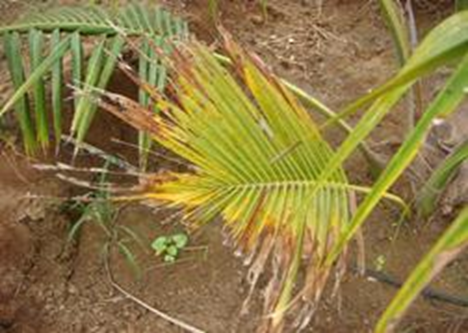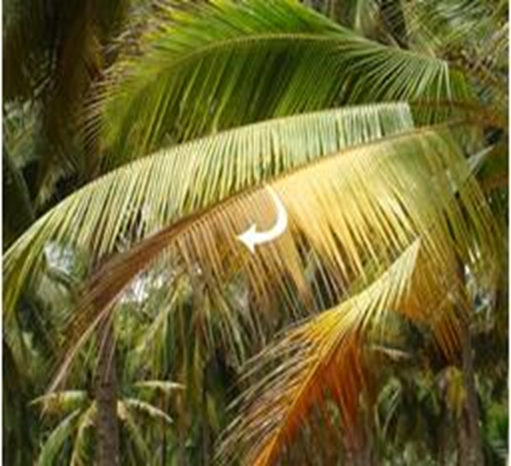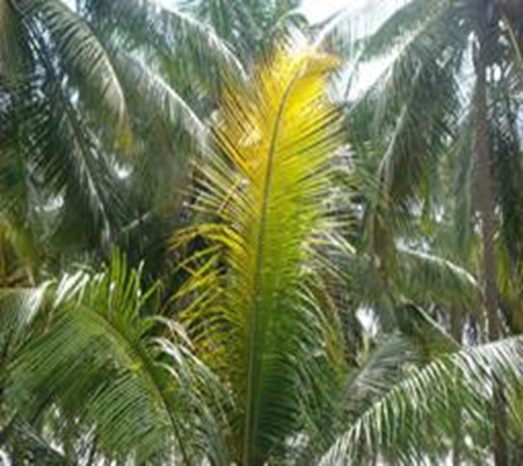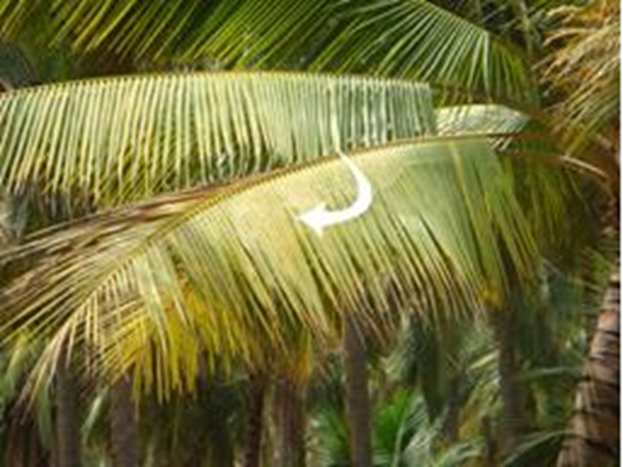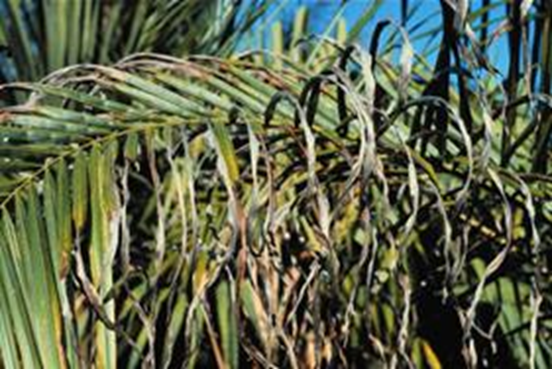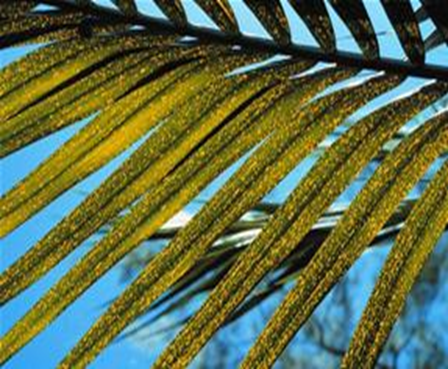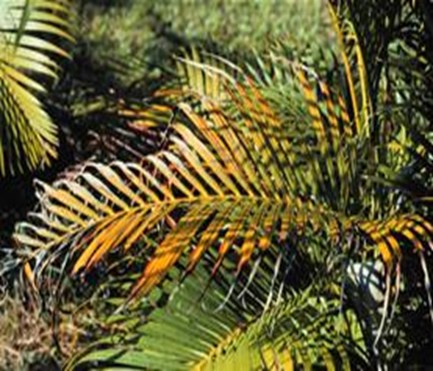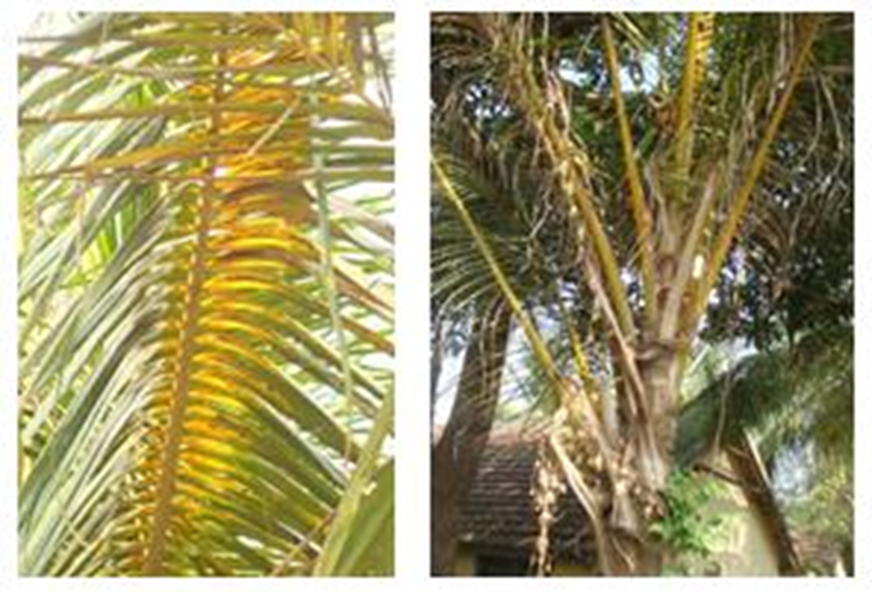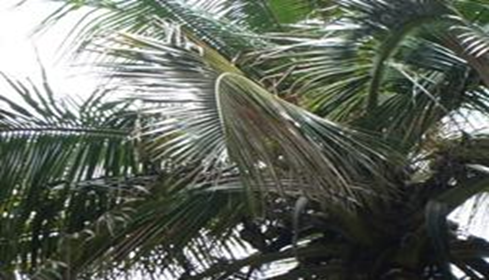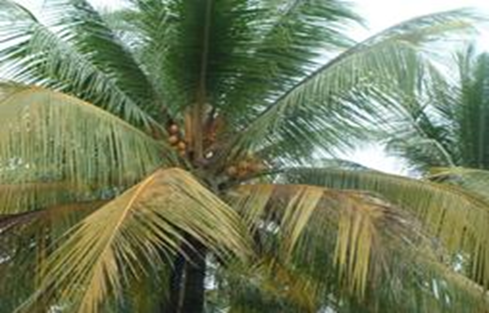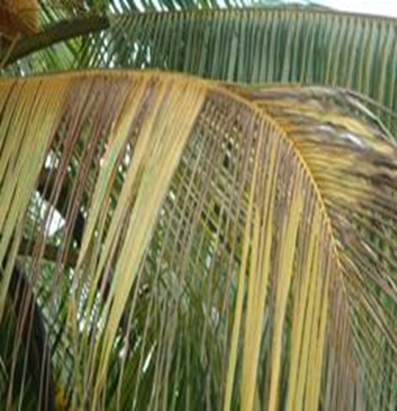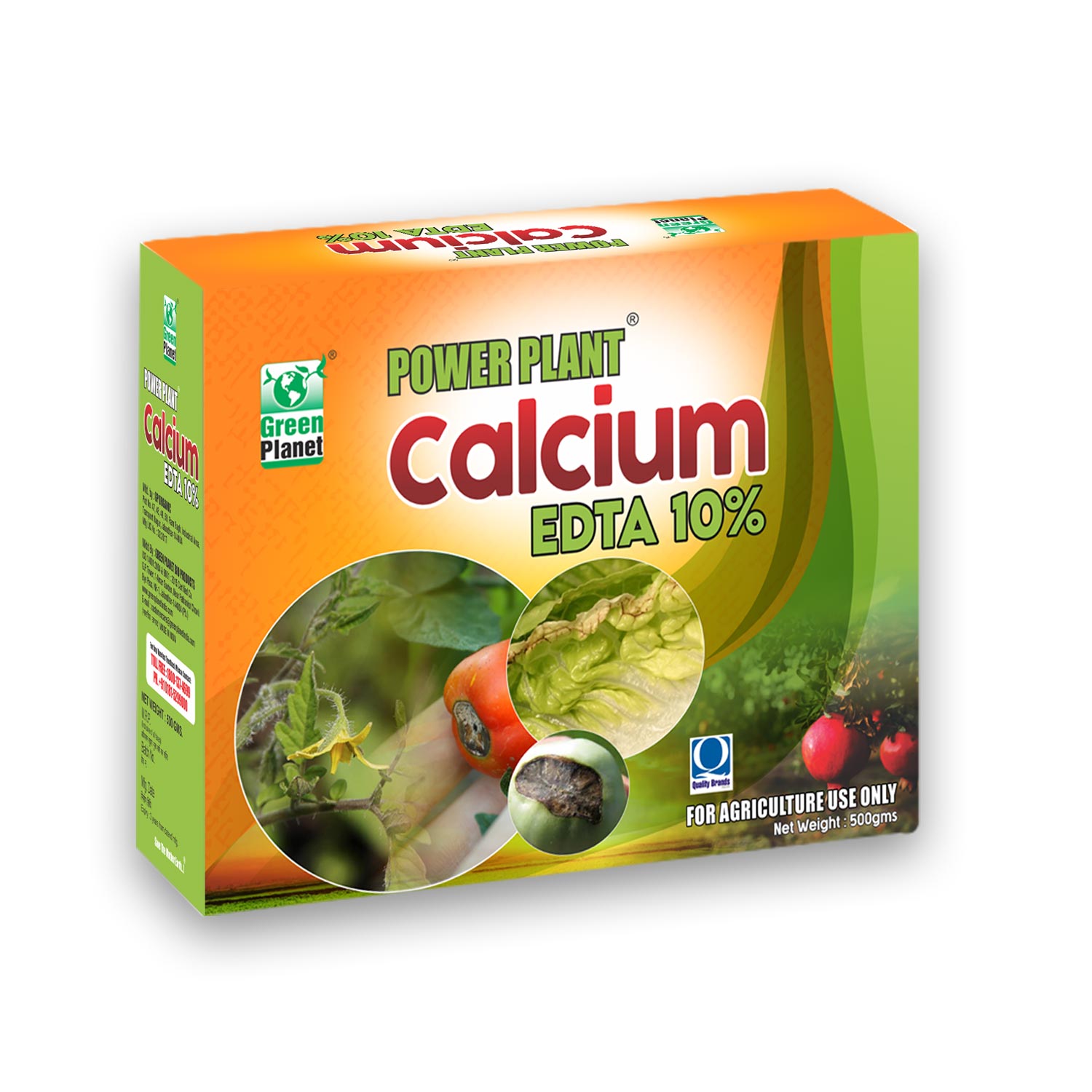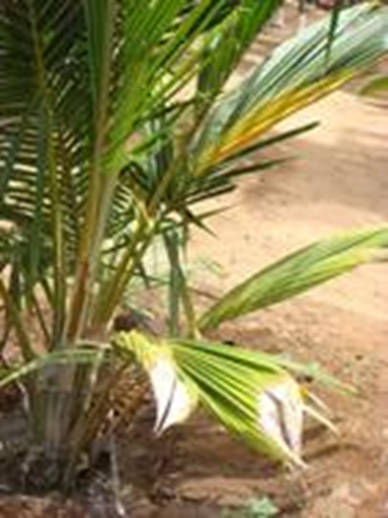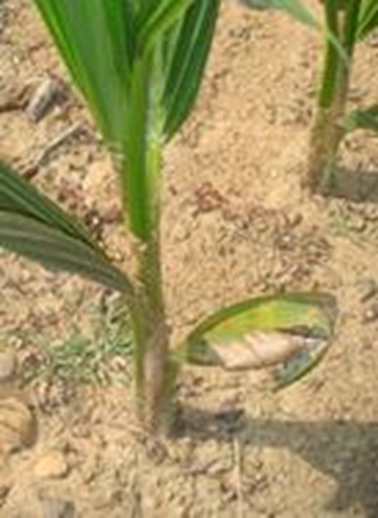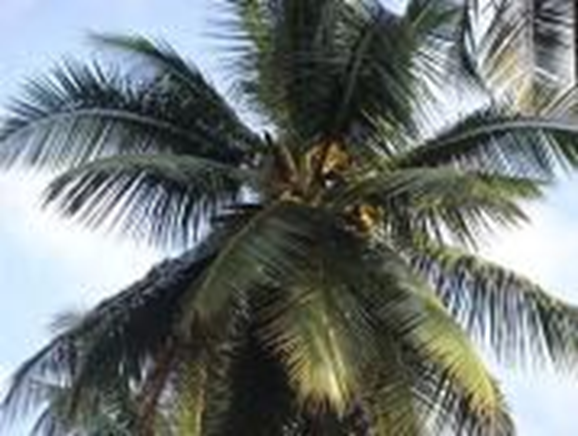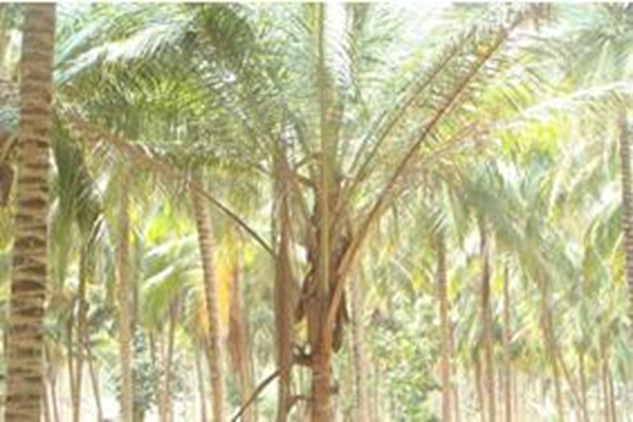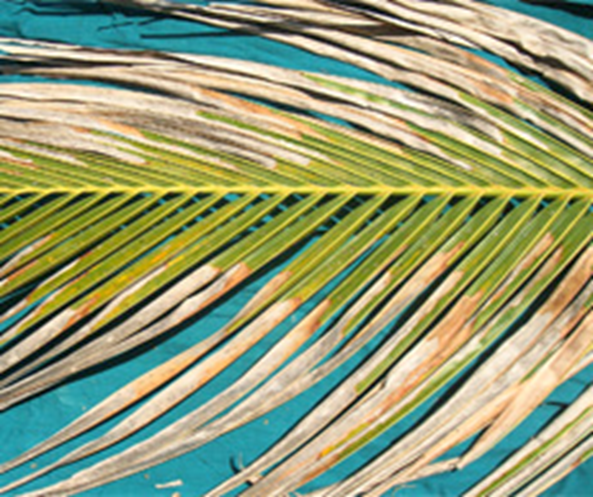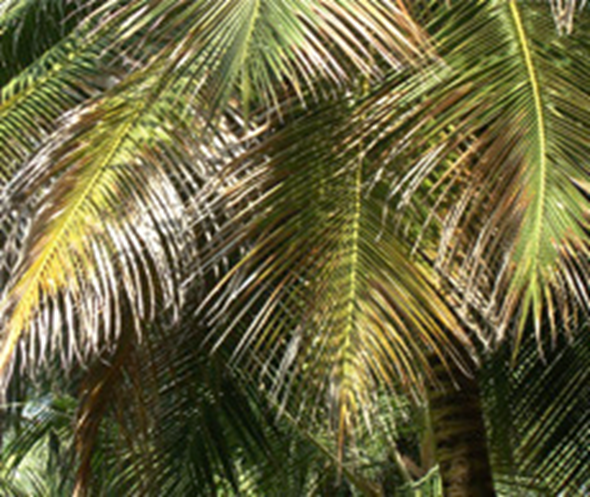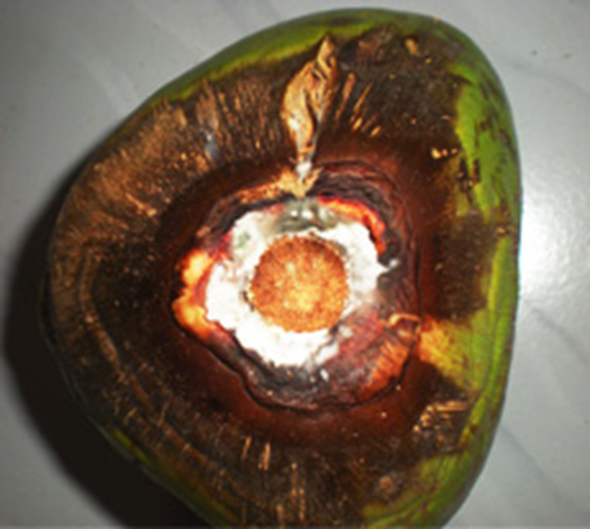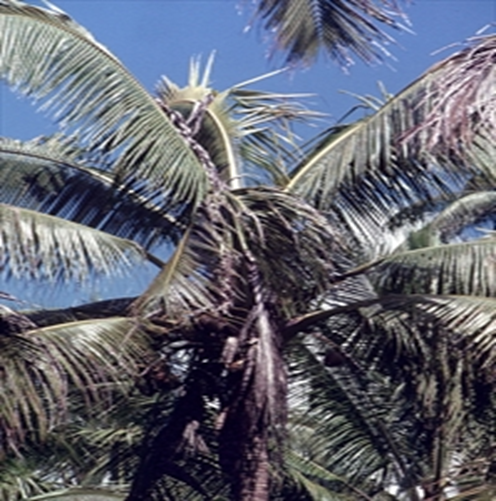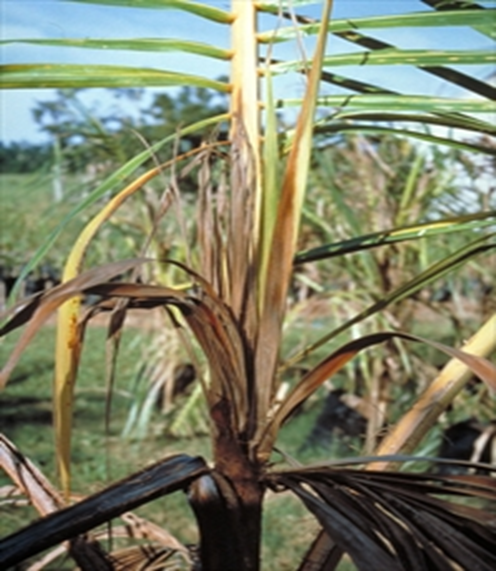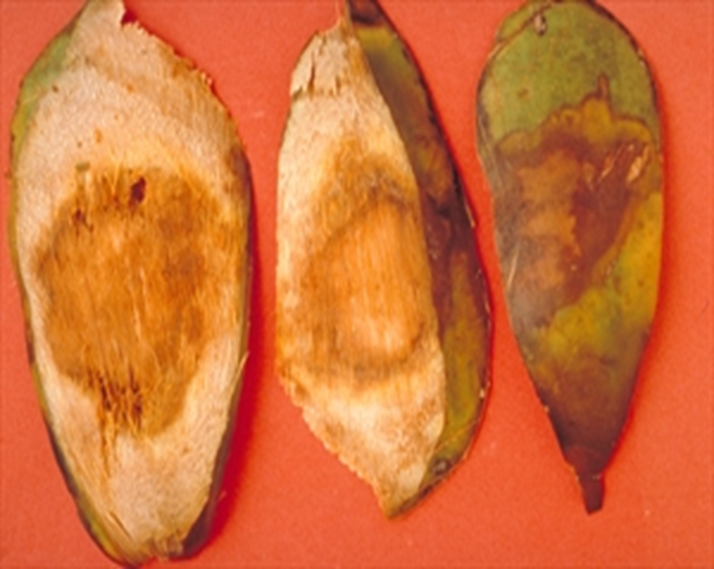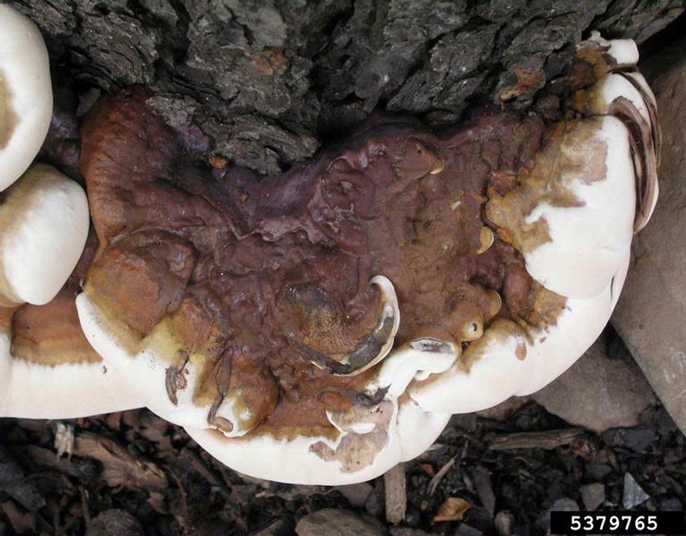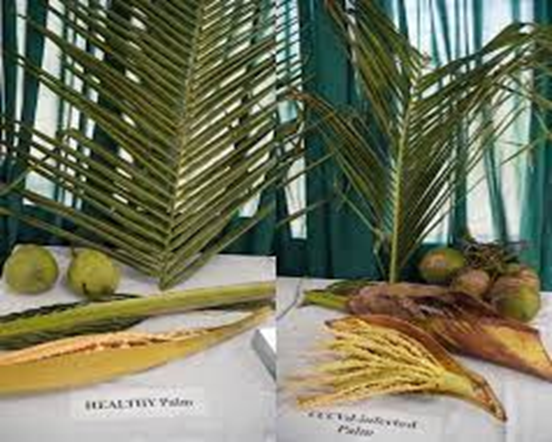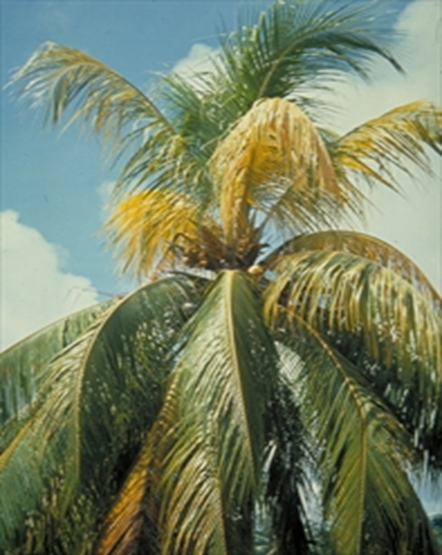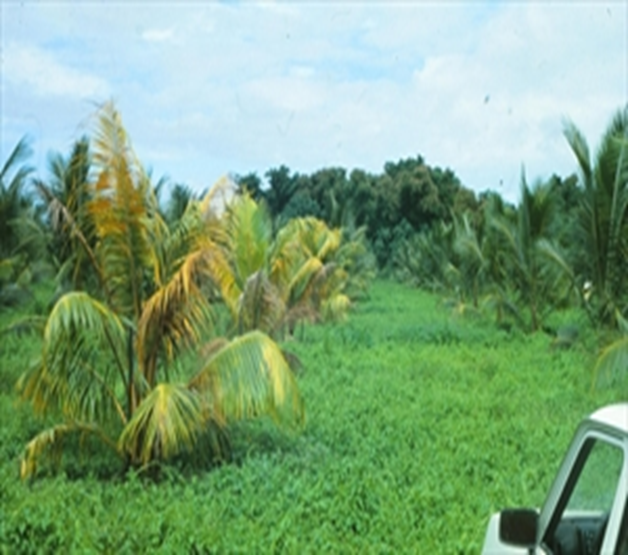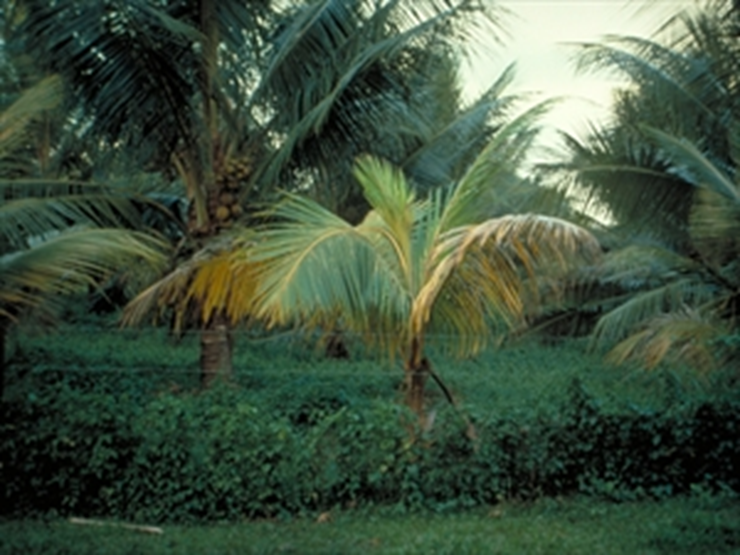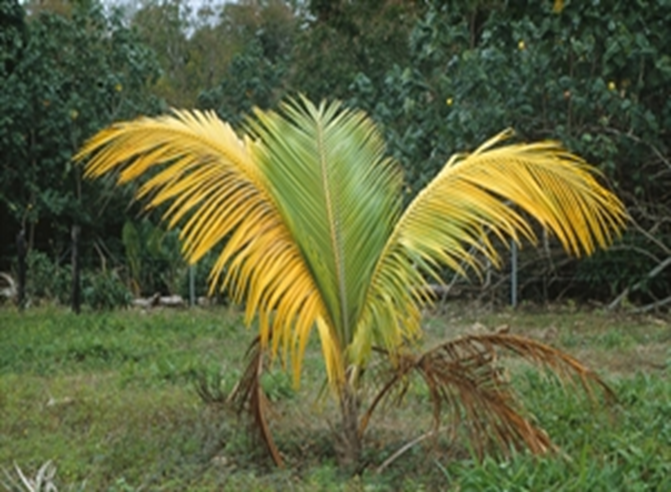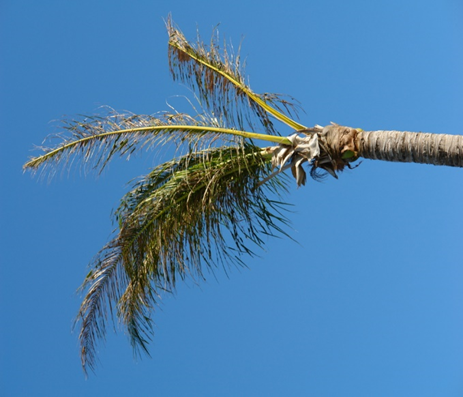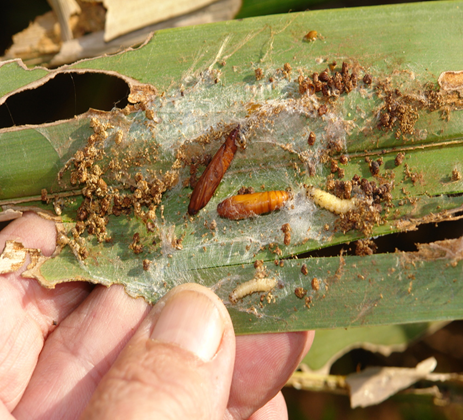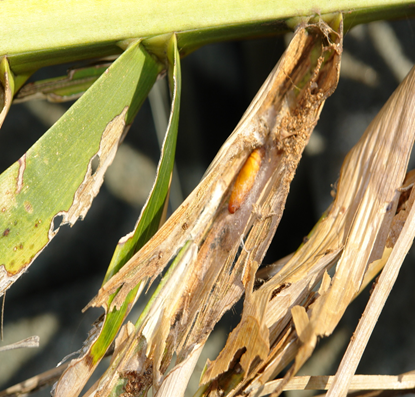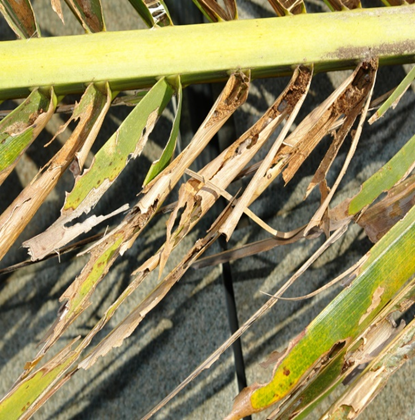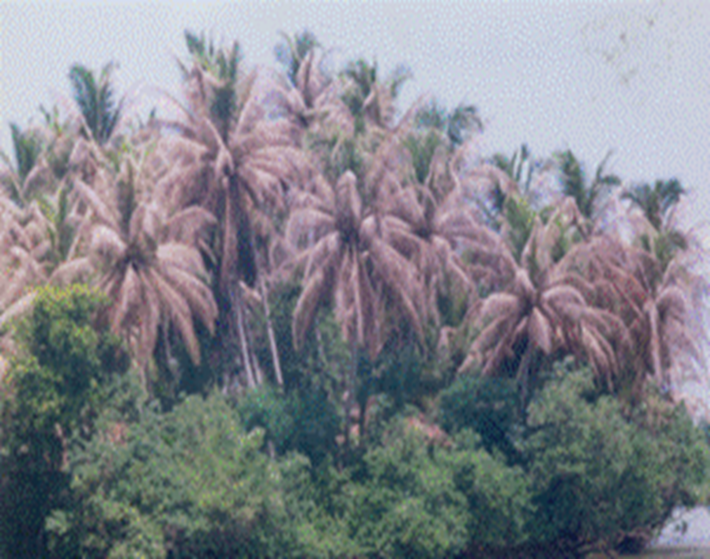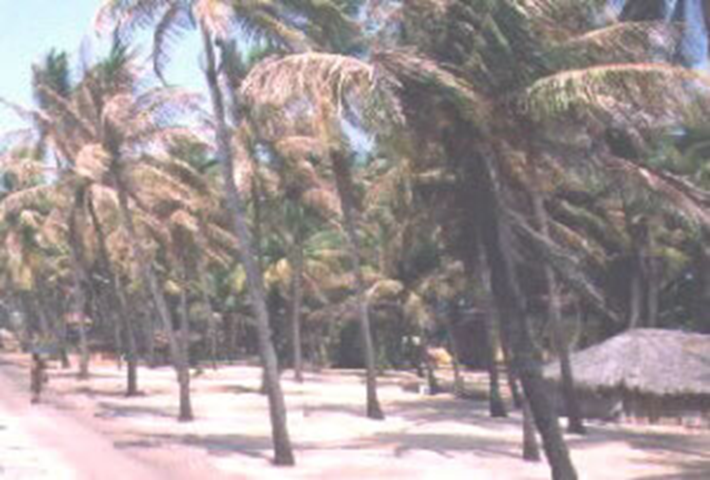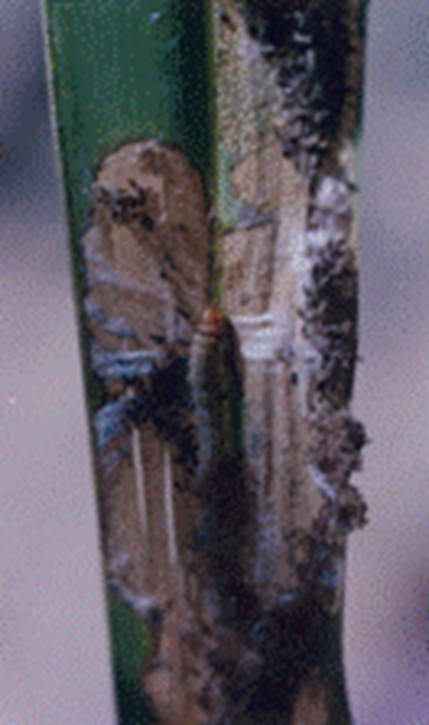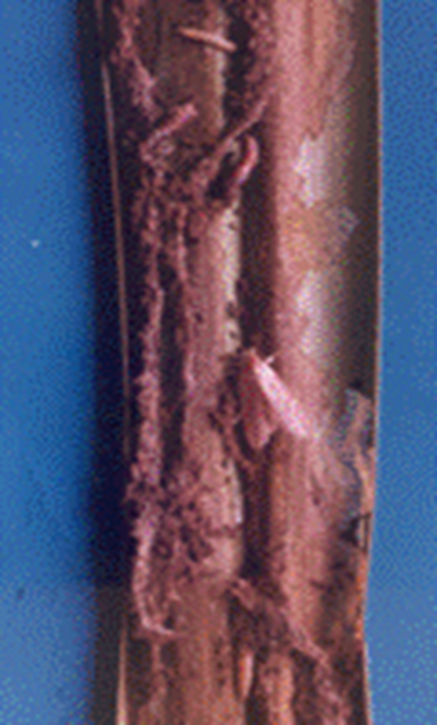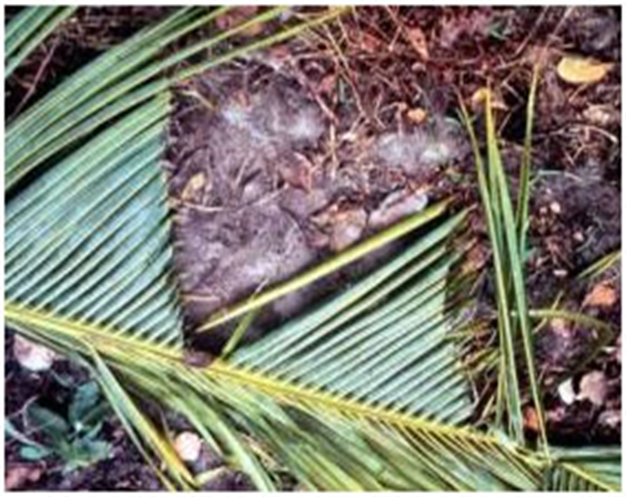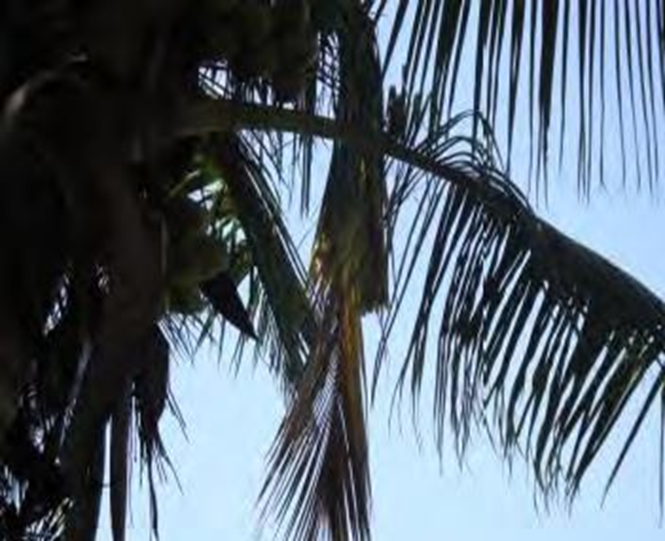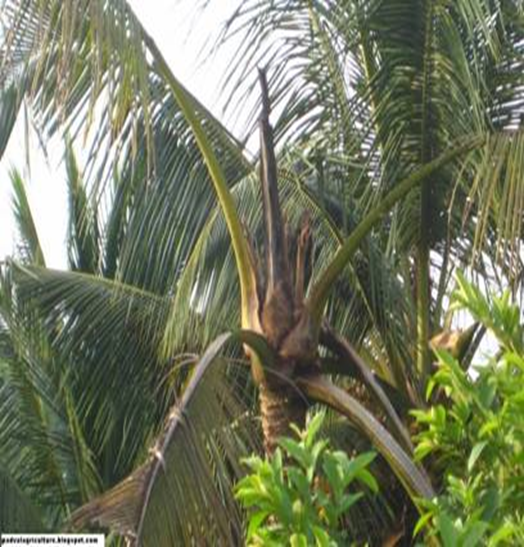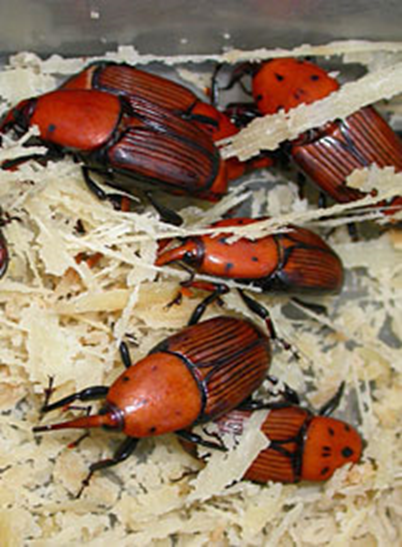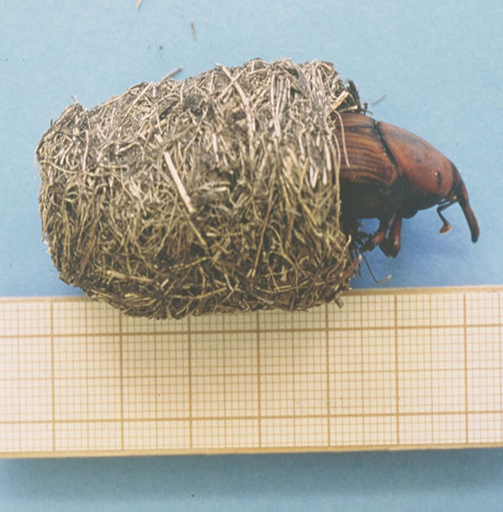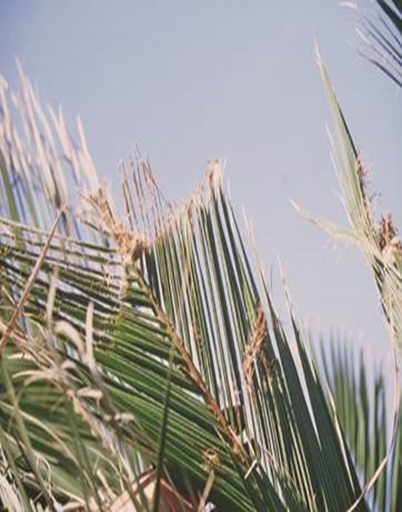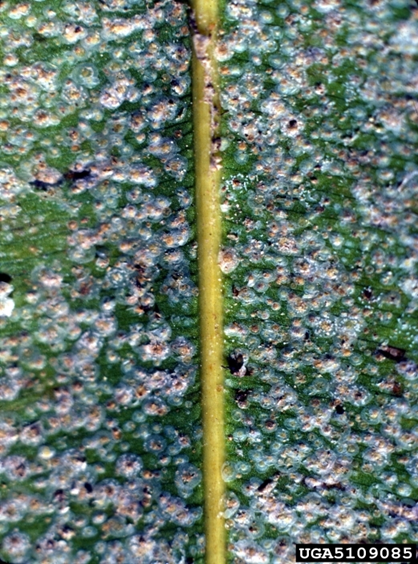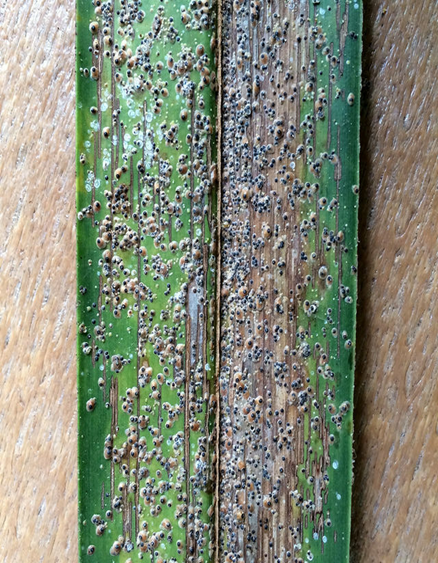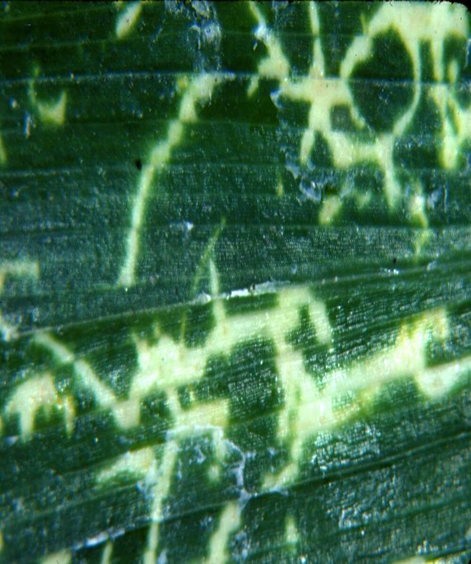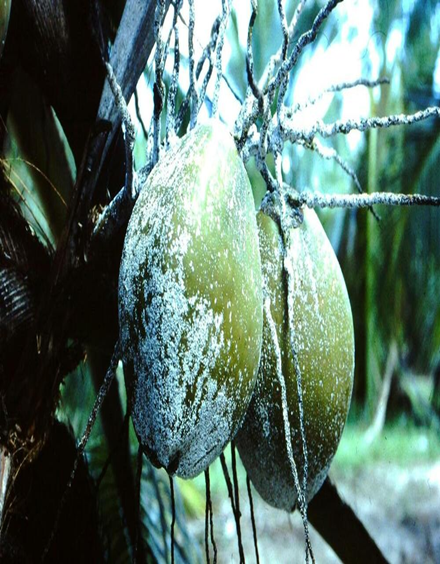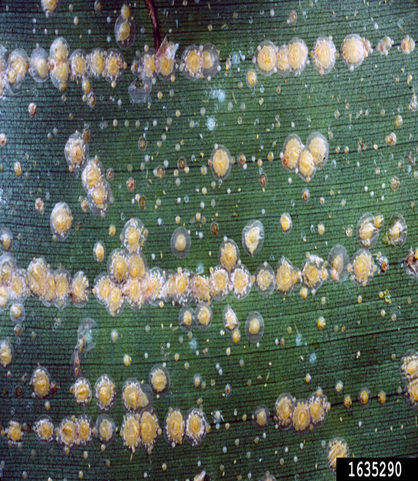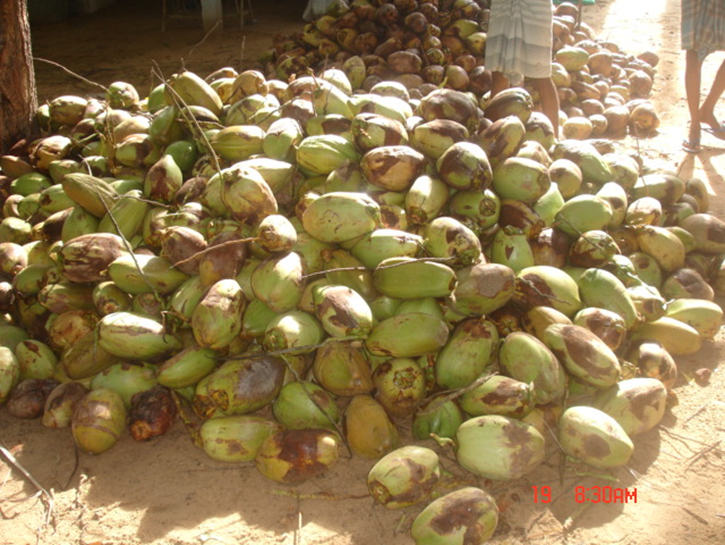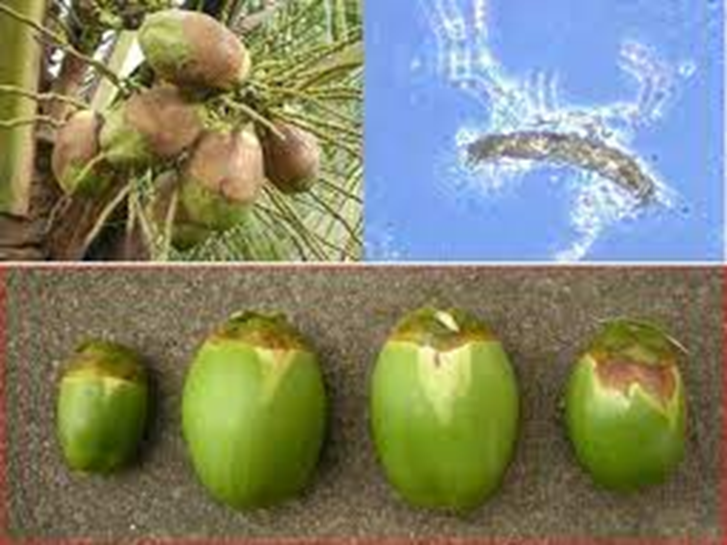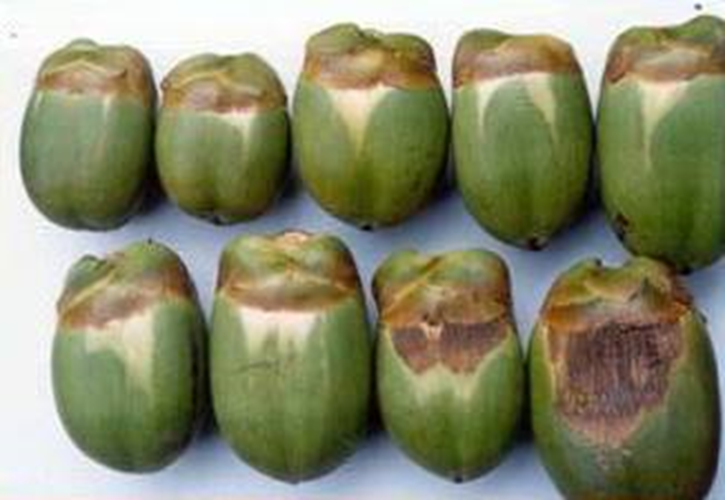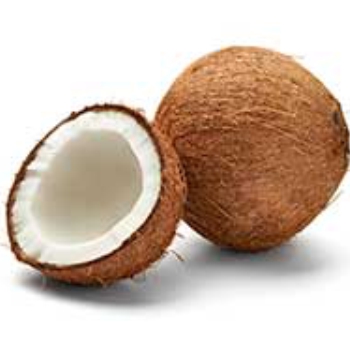
- Coconut is a tropical fruit plant that is widely grown in tropical and sub-tropical regions of the world.
- Though inconsistent, the origin is thought to be in South Asia, specifically Malaysia.
- Coconut palms are planted along India's coastal area.
- Kerala, Karnataka, and Tamil Nadu take the lead, followed by Goa, Maharashtra, Andhra Pradesh, and Orissa.
- Every portion of the coconut palm can be used by humans.
- It provides us with food, fuel, drink, oil, and shelter.
-
- Soil- laterite, alluvial, red sandy loam.
- pH- 5.2 to 8.0.
- Temperature- 27ºC.
- Rainfall- 1000 mm to 3000 mm.
- Climate- Coconut is a tropical crop and grows well in a hot climate.
- During the summer, irrigate the palms in basins around the palm.
- The amount of water needed depends on the soil type and weather conditions.
- A mature palm requires 600 to 800 liters of water every four to seven days on average.
- Irrigate seedlings and young palms with seawater for the first two years.
- The greatest technique of irrigation for coconut is drip irrigation.
FOR IRRIGATION :
Irrigate your field with Power Plant Bhoomi power, Premium, and Root guard.
|
BHOOMI POWER 4KG/ACRE |
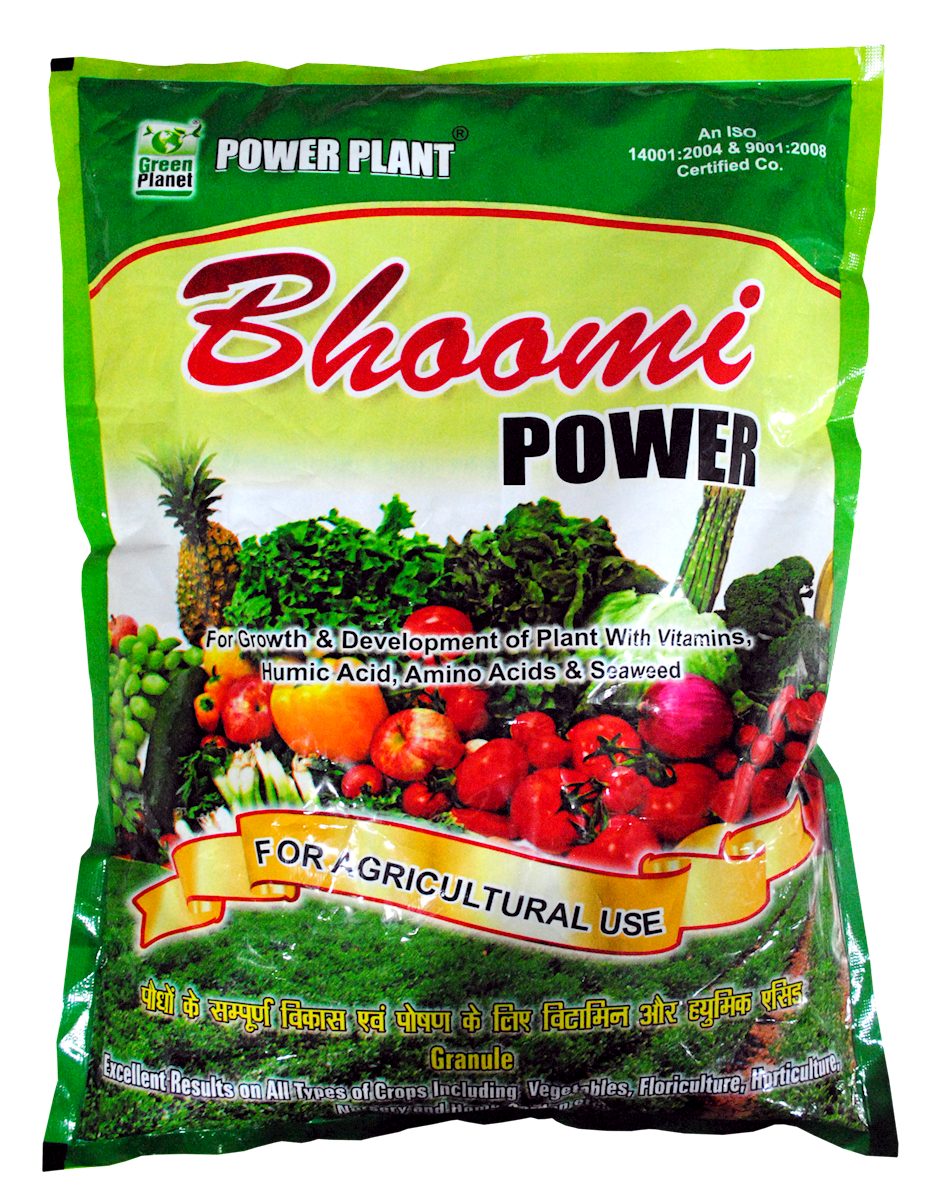 |
|
POWER PLANT PREMIUM 1 LITRE/ ACRE |
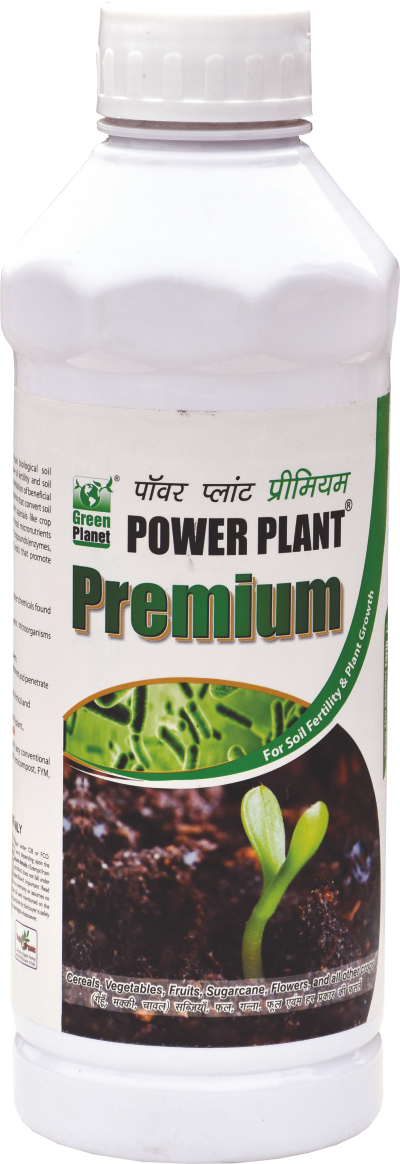 |
|
ROOT GUARD 2 KG/ACRE |
 |
HOW TO USE IT?
Use Bhoomi power by following methods.
1. By broadcasting over the field.
2. Use in slurry.
3. Give it in cow dung.
4. you can also give it in dry soil.
Note: Repeat Bhoomi power and Root guard every 3 months.
- Coconut is propagated through seedlings raised from selected seednuts.
- Generally 9 to 12-month-old seedlings are used for planting.
- Select seedlings, which have 6-8 leaves and 10-12 cm collar girth when they are 9-12 months old.
- Early splitting of leaves is another criterion in the selection of coconut seedlings.
PRODUCT RECOMMENDED:
Treat the root plants with Power Plant Seed Treatment.
1. DEFICIENCY OF BORON DEFICIENCY
2. DEFICIENCY OF MANGANESE
TREATMENT :
|
Use Manganese EDTA 0.5-01 gm per litre of water |
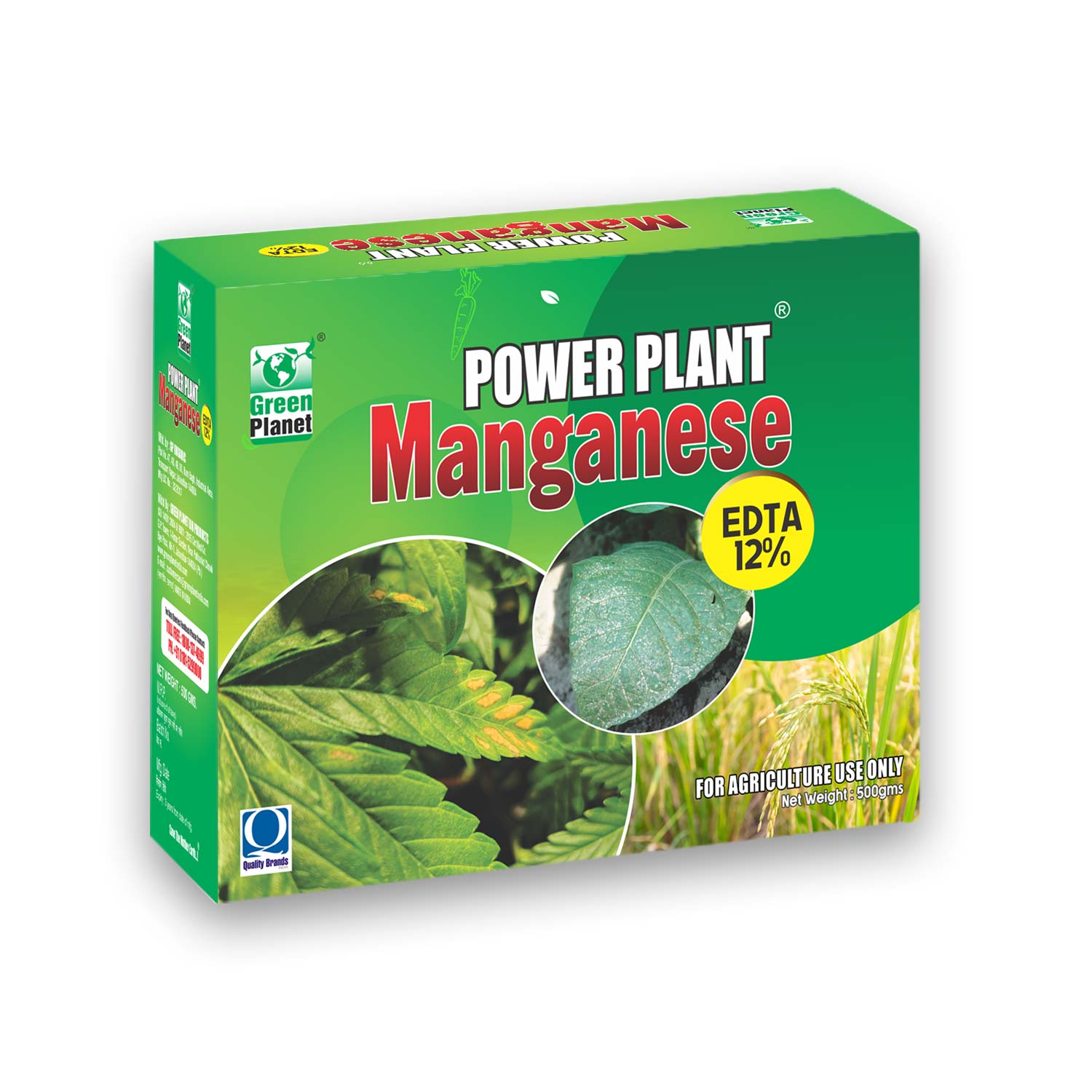 |
|
Use NITROKING 2-3 ml per litre of water |
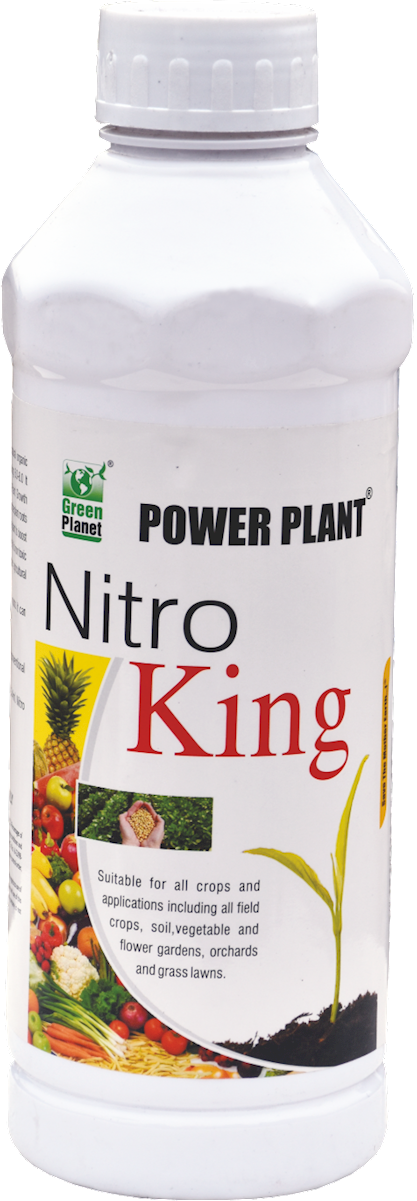 |
|
Use SPALL90 0.5 ml per litre of water |
 |
3. DEFICIENCY OF MAGNESIUM
TREATMENT :
|
Use NITROKING 2-3 ml per litre of water |
 |
|
Use SPALL90 0.5 ml per litre of water |
 |
4. DEFICIENCY OF ZINC
TREATMENT :
|
Use Zinc EDTA 0.5-01 gm per litre of water |
 |
|
Use NITROKING 2-3 ml per litre of water |
 |
|
Use SPALL90 0.5 ml per litre of water |
 |
5. DEFICIENCY OF IRON
TREATMENT :
|
Use Ferric EDTA 0.5-01 gm per litre of water |
.png) |
|
Use NITROKING 2-3 ml per litre of water |
 |
|
Use SPALL90 0.5 ml per litre of water |
 |
6. DEFICIENCY OF NITROGEN
TREATMENT :
|
Use NITROKING 2-3 ml per litre of water |
 |
|
Use SPALL90 0.5 ml per litre of water |
 |
7. DEFICIENCY OF POTASSIUM
TREATMENT :
|
Use NITROKING 2-3 ml per litre of water |
 |
|
Use SPALL90 0.5 ml per litre of water |
 |
8. DEFICIENCY OF PHOSPHOROUS
TREATMENT :
|
Use NITROKING 2-3 ml per litre of water |
 |
|
Use SPALL90 0.5 ml per litre of water |
 |
9. DEFICIENCY OF CALCIUM
TREATMENT :
Use Calcium EDTA
0.5 gm per
litre of water
Use Grow
2 ml per litre
of water
Use SPALL90
0.5 ml per litre
of water
10. DEFICIENCY OF COPPER
TREATMENT :
|
Use Copper EDTA 0.5 gm per litre of water |
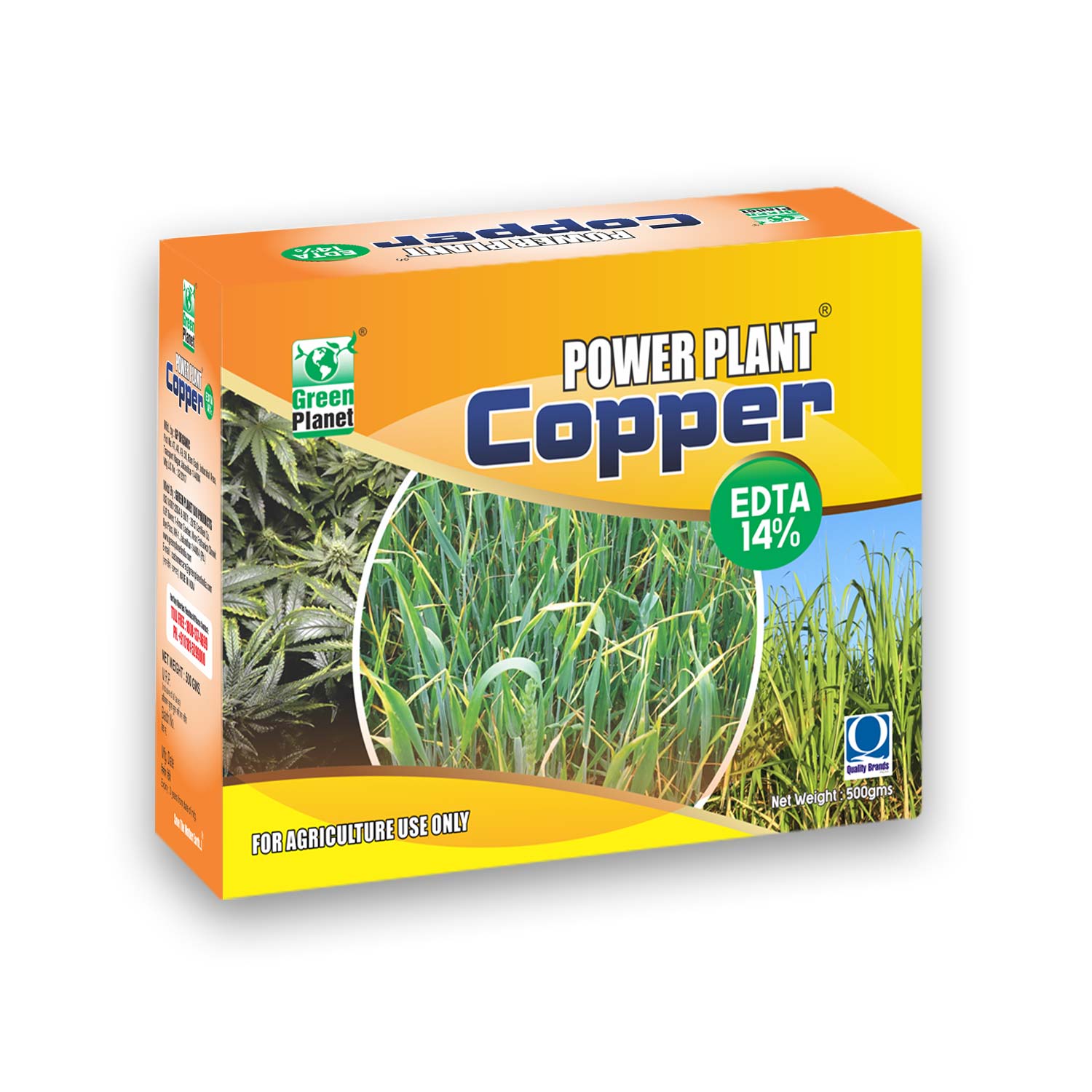 |
|
Use Grow 2 ml per litre of water |
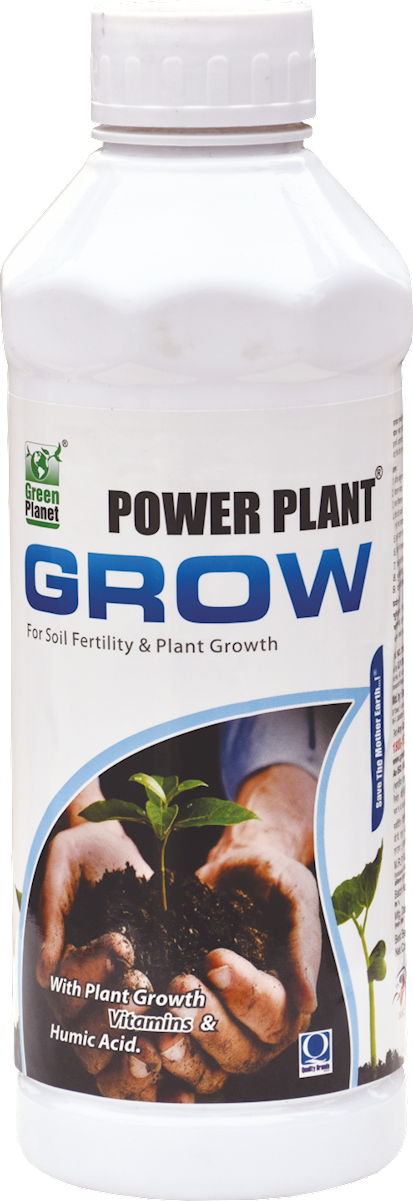 |
|
Use SPALL90 0.5 ml per litre of water |
 |
11. DEFICIENCY OF MOLYBDENUM
TREATMENT :
|
Use NITROKING 2-3 ml per litre of water |
 |
|
Use SPALL90 0.5 ml per litre of water |
 |
1. FUNGAL DISEASE: CONTACT-BASED FUNGAL DISEASE
Leaf blight (Lasiodiplodia theobromae)
TREATMENT :
|
Use PPFC 2-3 gm per litre of water |
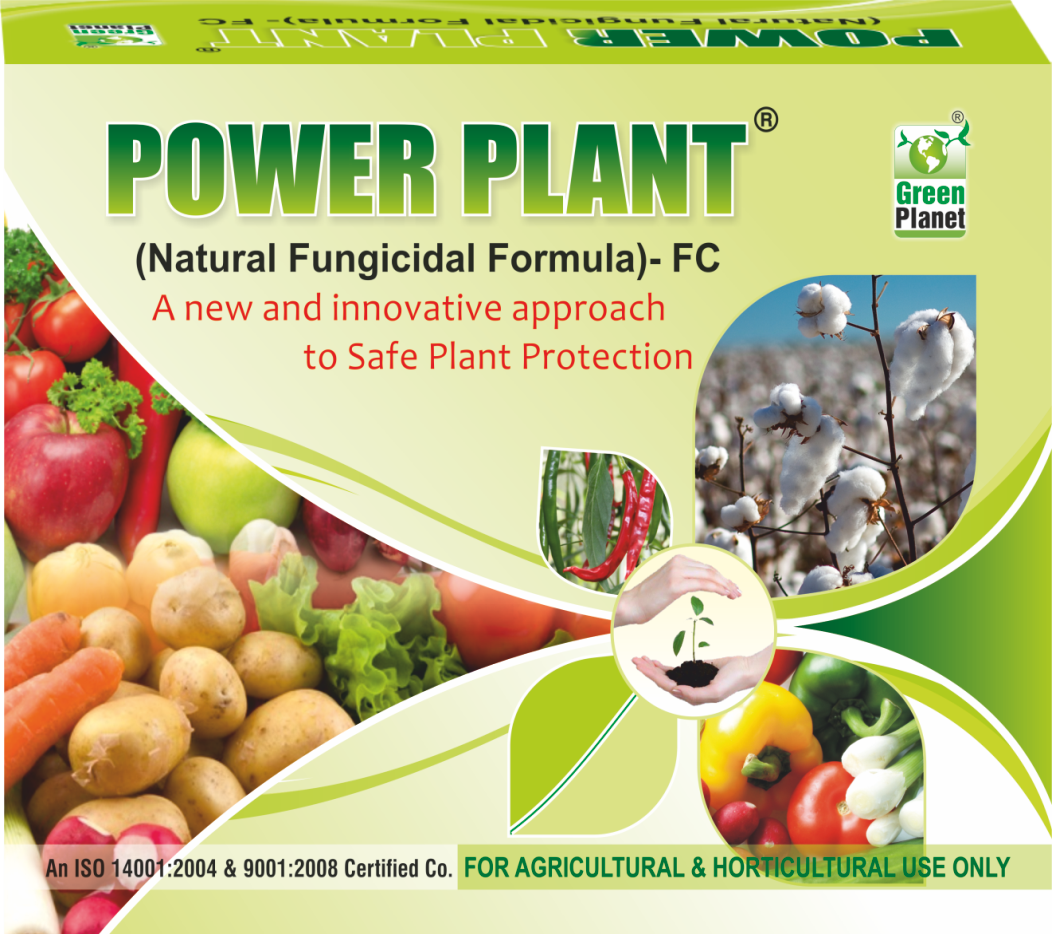 |
|
Use SpAll90 0.5 ml per litre of water |
 |
2. FUNGAL DISEASE: SYSTEMIC-BASED FUNGAL DISEASE
TREATMENT :
|
Use Fungohit 2-3ml per litre of water |
 |
|
Use SpAll90 0.5 ml per litre of water |
 |
2. FUNGAL DISEASE: SYSTEMIC-BASED FUNGAL DISEASE
Ganoderma butt rot (Ganoderma spp.)
TREATMENT :
|
Use Fungohit 2-3ml per litre of water |
 |
|
Use SpAll90 0.5 ml per litre of water |
 |
3. VIRUS
1. Cadang-cadang Coconut cadang-cadang viroid (CCCVd)
TREATMENT :
|
Use Virohit 2-3 ml per litre of water |
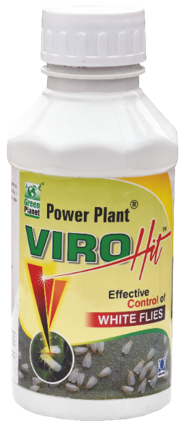 |
|
Use virosol 2-3 ml per litre of water |
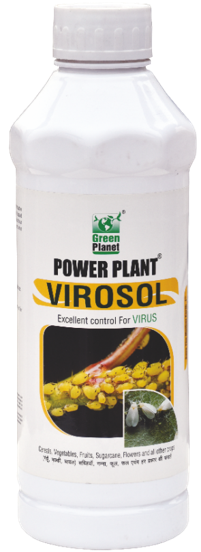 |
|
Use PPNP 1 ml per litre of water |
 |
|
Use SpAll90 0.5 ml per litre of water |
 |
2. Coconut foliar decay Coconut foliar decay virus (CFDV)
TREATMENT :
|
Use Virohit 2-3 ml per litre of water |
 |
|
Use virosol 2-3 ml per litre of water |
 |
|
Use PPNP 1 ml per litre of water |
 |
|
Use SpAll90 0.5 ml per litre of water |
 |
4. PEST: CHEWING PEST
1. Coconut leafroller (Omiodes blackburni)
TREATMENT:
|
Use Pestohit 2-3 ml per litre of water |
 |
|
Use PPNP 1 ml per litre of water |
 |
|
Use SpAll90 0.5 ml per litre of water |
 |
4. PEST: CHEWING PEST
2. Black-headed caterpillar (Opisina arenosella)
TREATMENT:
|
Use Pestohit 2-3 ml per litre of water |
 |
|
Use PPNP 1 ml per litre of water |
 |
|
Use SpAll90 0.5 ml per litre of water |
 |
4. PEST: CHEWING PEST
3. Rhinoceros beetle (Oryctes rhinoceros)
TREATMENT:
|
Use Pestohit 2-3 ml per litre of water |
 |
|
Use PPNP 1 ml per litre of water |
 |
|
Use SpAll90 0.5 ml per litre of water |
 |
4. PEST: CHEWING PEST
Red palm weevil: Rhynchophorus ferrugineus
TREATMENT:
|
Use Pestohit 2-3 ml per litre of water |
 |
|
Use PPNP 1 ml per litre of water |
 |
|
Use SpAll90 0.5 ml per litre of water |
 |
5. PEST: SUCKING PEST
1. Coconut scale (Aspidiotus destructor)
TREATMENT :
|
Use Orgomite 2-3 ml per litre of water |
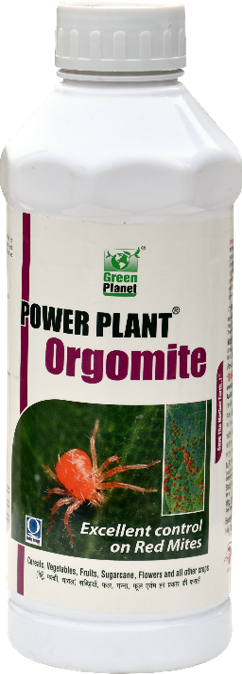 |
|
Use PPNP 1 ml per litre of water |
 |
|
Use SpAll90 0.5 ml per litre of water |
 |
5. PEST: SUCKING PEST
2. Coconut Eriophyid mite: Aceria guerreronis
TREATMENT :
|
Use Orgomite 2-3 ml per litre of water |
 |
|
Use PPNP 1 ml per litre of water |
 |
|
Use SpAll90 0.5 ml per litre of water |
 |


